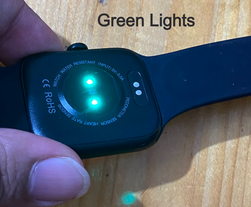

3,217


14,082


4,046

13,902

8,212
A smart ring is an innovative and exciting wearable device that comfortably fits on your finger, akin to a traditional ring. However, it offers a range of advanced functionalities that set it apart. This compact gadget represents the fusion of fashion and technology, enabling users to maintain their personal style while enjoying the convenience of modern mobile innovations.
In this article I'll try to cover the electronics parts used inside a Smart Ring and exploring the components and their functions.
The microcontroller is the brain of the smart ring, and it controls the various features and functions of the device.
Sensors are used to track the wearer's activity and vital signs, including heart rate, blood pressure, and sleep patterns.
The battery is an essential component of the smart ring, and it provides power to the device. There are various charging options available, including wired and wireless charging.
There are various display options available for smart rings, including LED, OLED, and e-ink displays, which provide different levels of functionality and performance.
A microcontroller is a small computer on a single integrated circuit that is designed to control devices such as smart rings. The ATtiny85 and the ATmega328P are commonly used microcontrollers in smart rings.
ATtiny85 is a low-power, high-performance microcontroller designed for small devices like smart rings or other wearable electronics.
ATtiny85 has 8KB of flash memory, which is ideal for simple applications that require low memory.
ATtiny85 has 512 bytes of RAM, which is sufficient for simple applications that require low RAM.
The ATmega328P is equipped with 32KB of flash memory, allowing it to store more complex programs and data than previous microcontrollers.
With 2KB of RAM, the ATmega328P can handle more complex computations, making it a popular choice for smart rings that require advanced features and functions.
The ATmega328P is used in more complex smart rings that require advanced features, such as Bluetooth connectivity and other wireless communication technologies.
Find the teardown of Samsung Smart Ring shared by IFIXIT in 2024.
Sensors in smart rings are used to track the wearer's activity and vital signs, such as heart rate and sleep quality, making them an important tool for monitoring health and fitness.
Accelerometers are sensors that detect changes in motion, acceleration, tilt, and vibration. They are used in smart rings to track activity levels and monitor physical movement.
Gyroscopes are sensors that detect changes in orientation, rotation, and angular velocity. Gyroscopes are used in smart rings to track the wearer's hand movements and gestures,
enabling control of connected devices, gaming, and fitness tracking.
Heart rate sensors are used to monitor heart rate and detect changes in heart rate variability. It is used in smart rings to track the wearer's fitness and health, providing valuable insights into their physical well-being.They are an important tool for monitoring cardiovascular health and fitness.
There are different types of batteries used in smart rings, including Lithium Polymer, Lithium-ion, Zinc-air, and Zinc-carbon. Each type has its own advantages and disadvantages. Lithium Polymer batteries are commonly used in smart rings due to their high energy density, compact size, long lifespan and the ability to be recharged multiple times.
Smart rings can be charged wirelessly using a charging pad or other wireless charging options. This is a convenient and easy way to keep your smart ring charged and ready to use. It uses electromagnetic induction to transfer energy from a charging pad to the smart ring.
The display is an optional component of a smart ring that provides a visual interface for the wearer. It can display notifications, messages, and other information.
OLED displays are used in some smart rings due to their thin and flexible nature, low power consumption and high contrast. They emit their own light (and do not require a backlight), making them more energy-efficient than LCD displays. They also provide a high contrast ratio and deep blacks.
LED displays are also used in some smart rings, especially those with limited power or space. They are cheaper and require less power than OLED displays. However, they have lower resolution and limited colour options.
An overview of the components inside the smart ring according to the Gadgetsin. This is picture is from a smart ring (named Bio Ring) model of 2016. It is modified with additional sensors, more battery back up with current available models. If you want to know more how all of these works and the key player in the market follow this link.
Find the teardown Oura Ring 2 shared by IFIXIT during 2020.









Comments